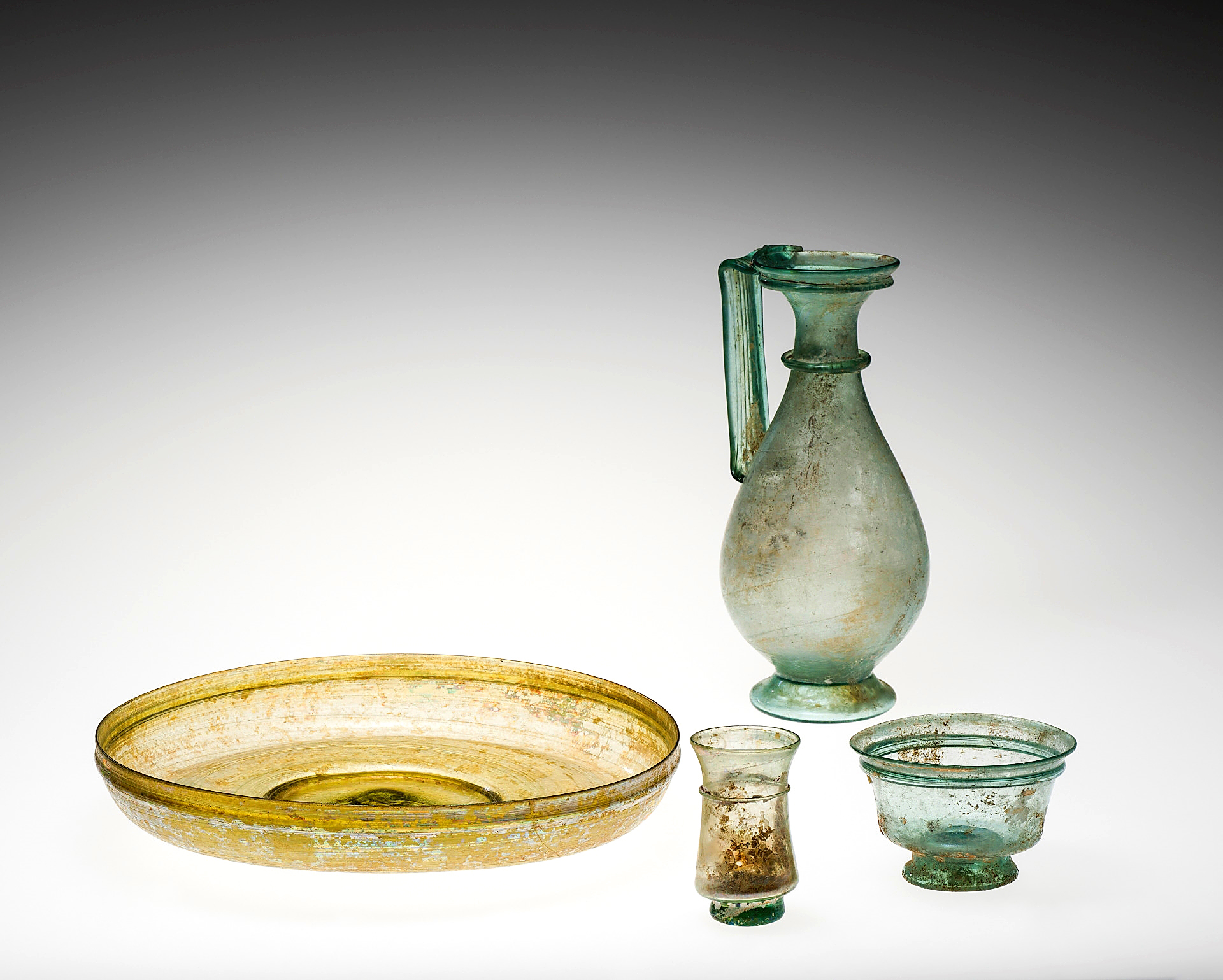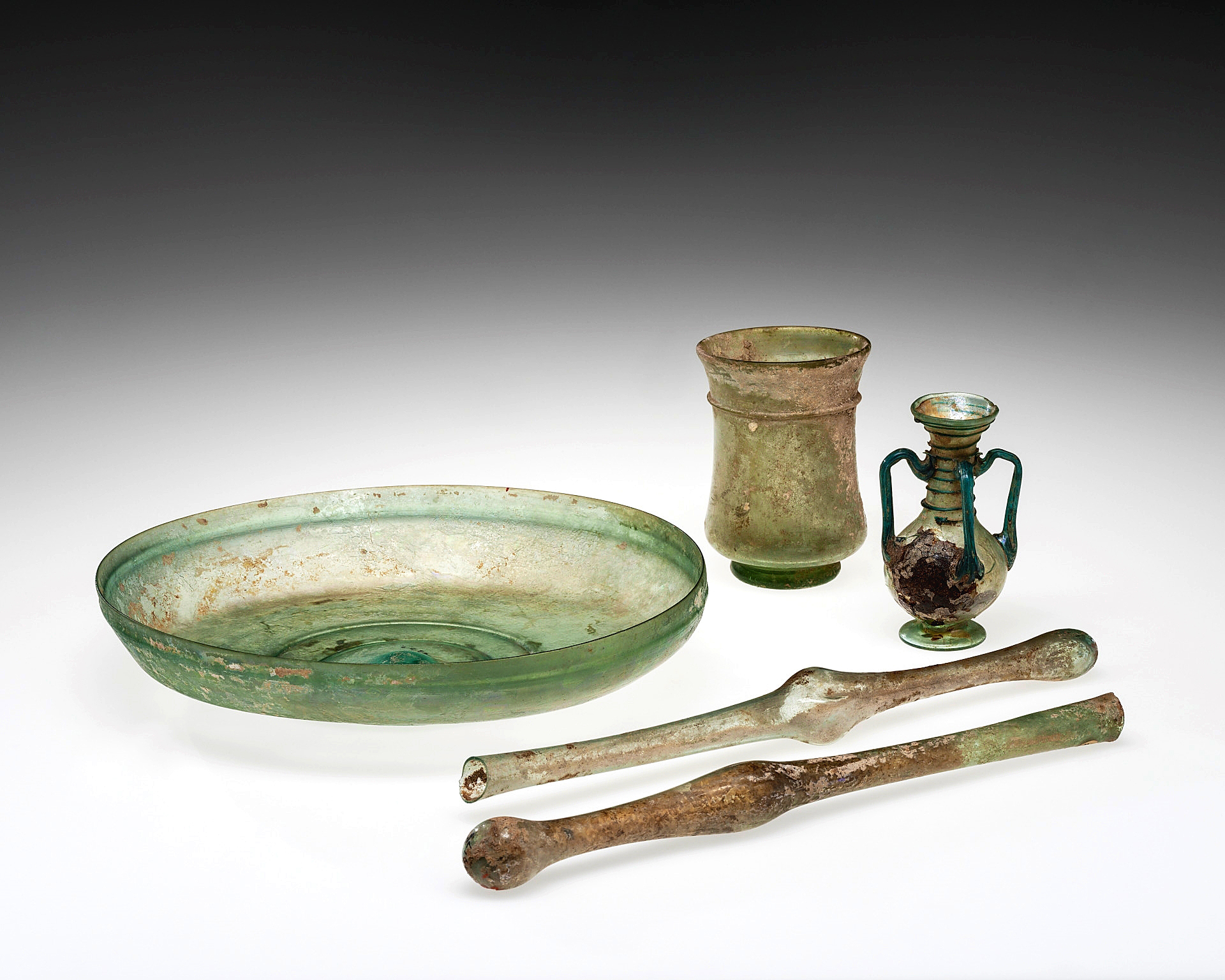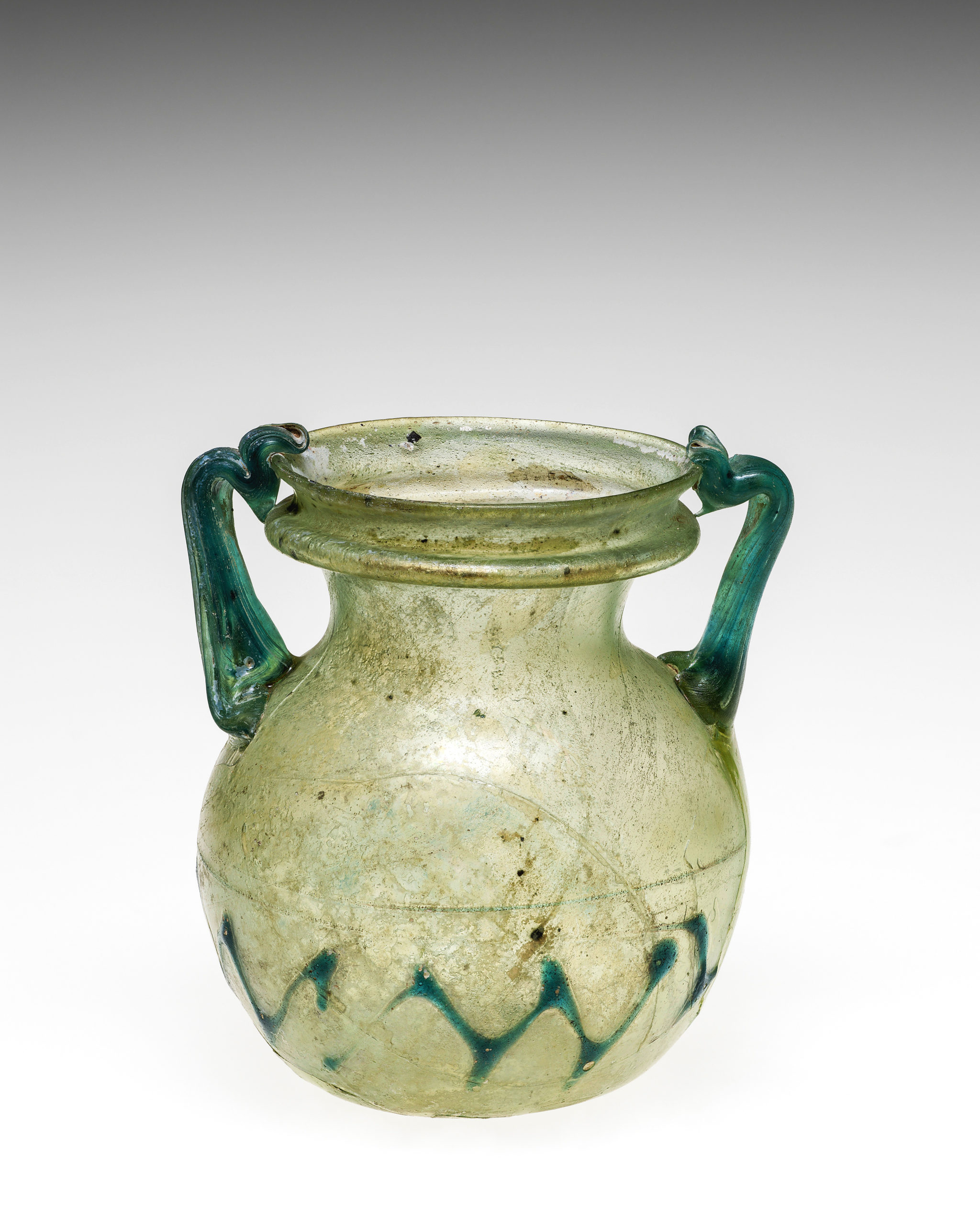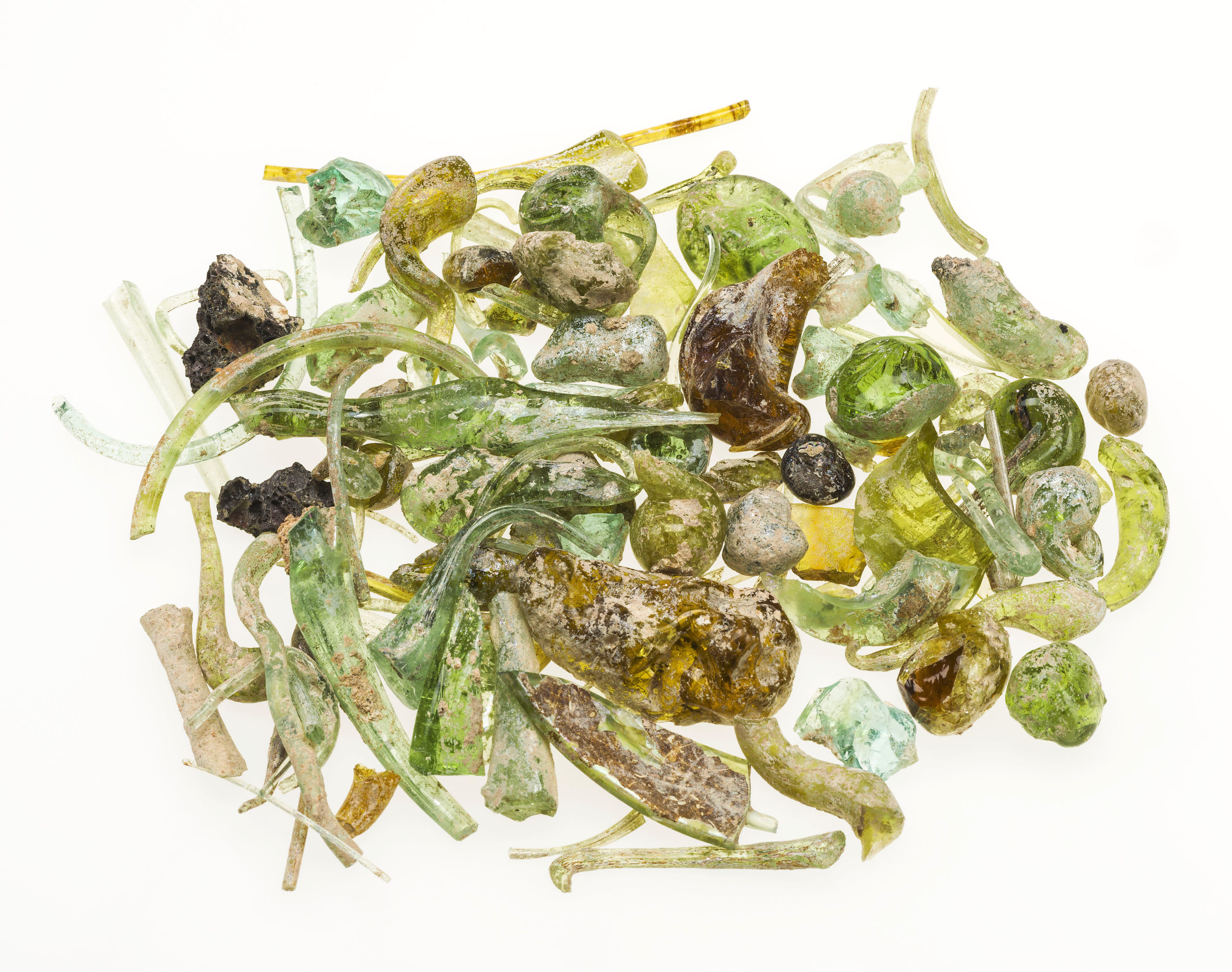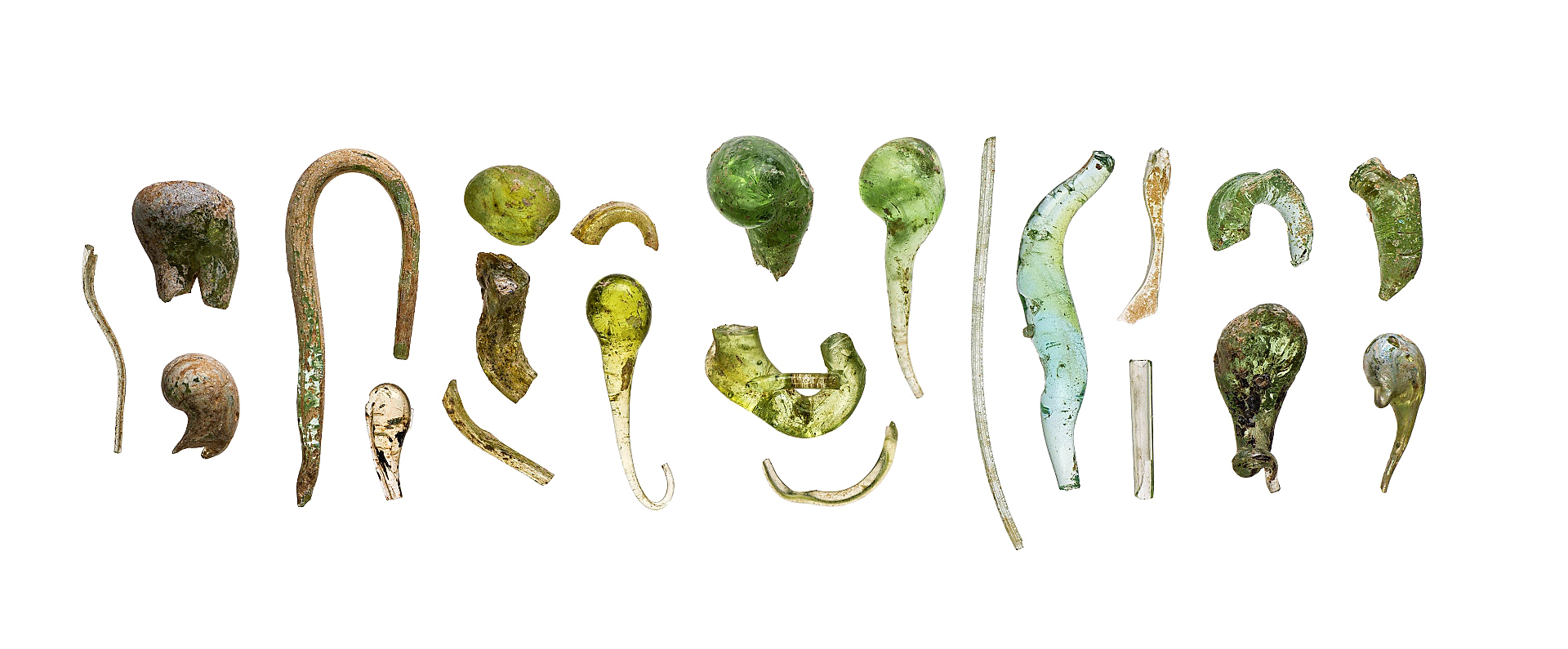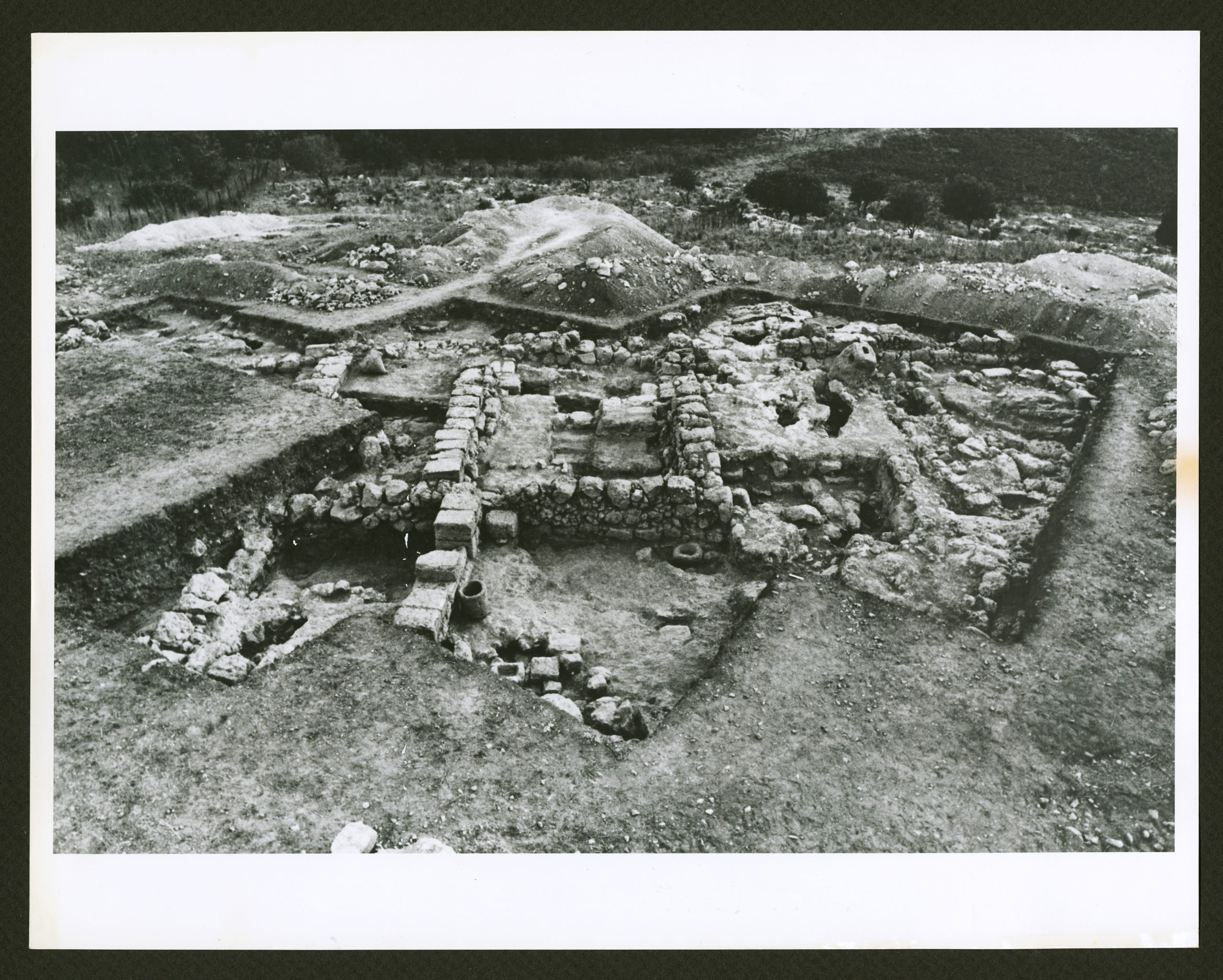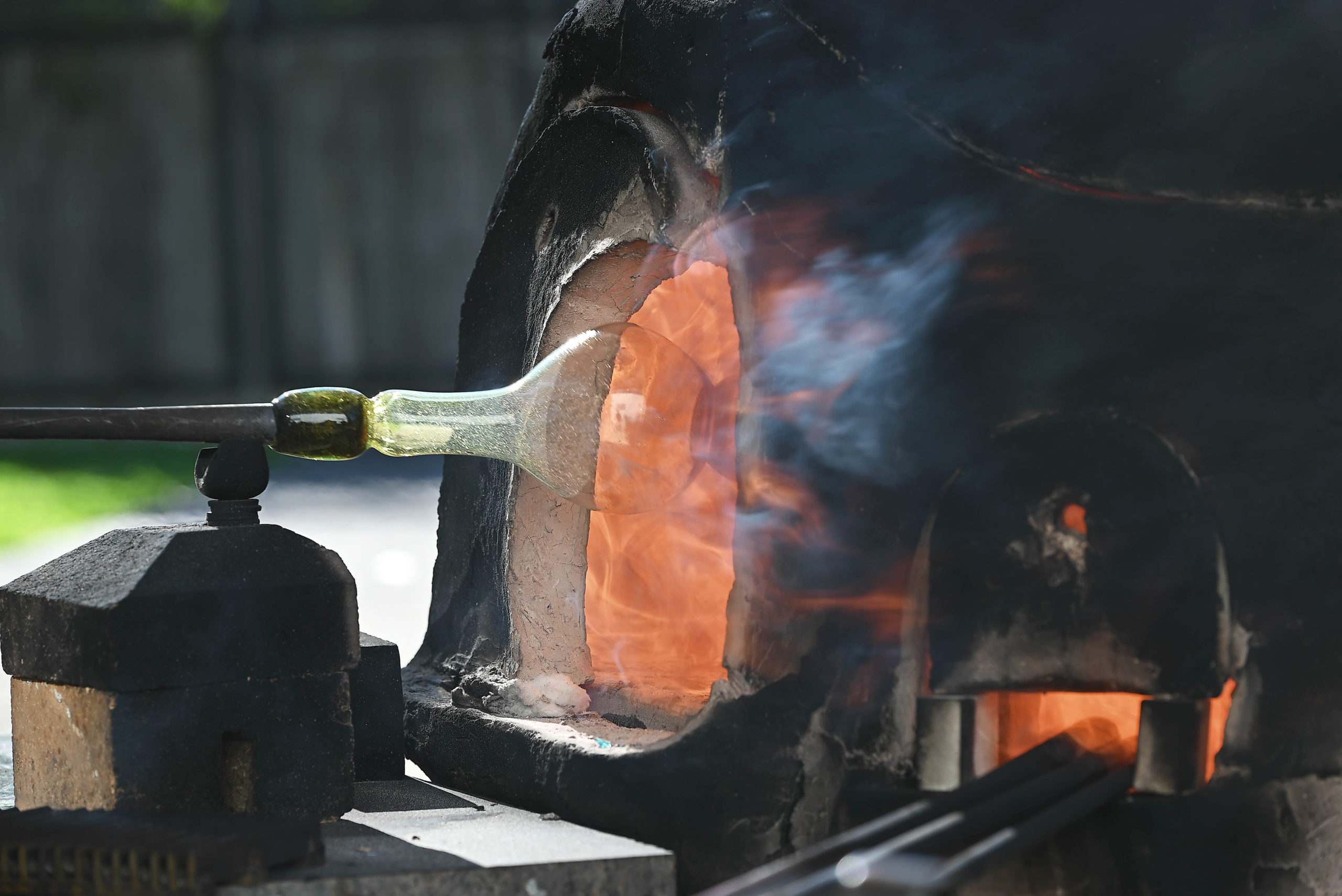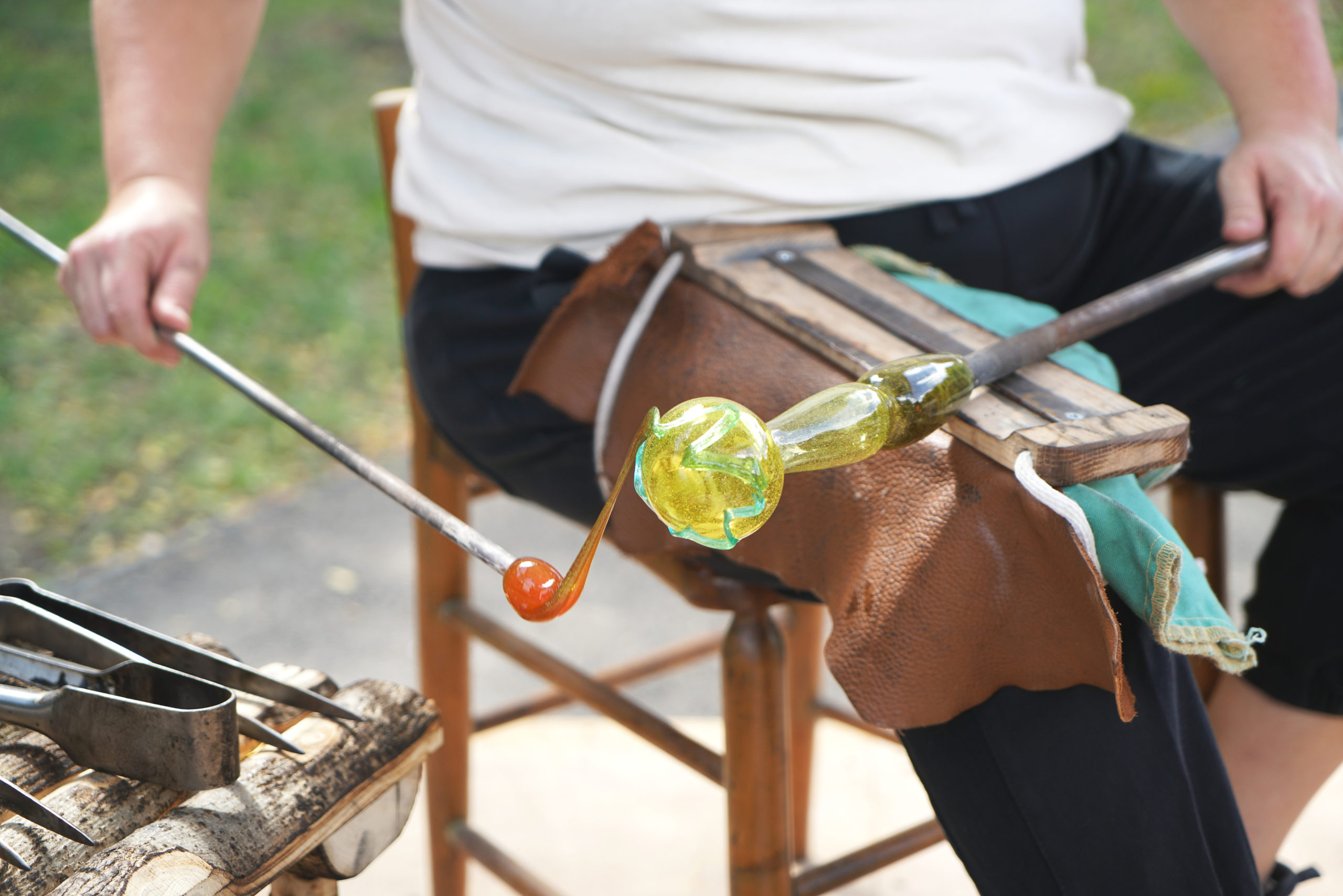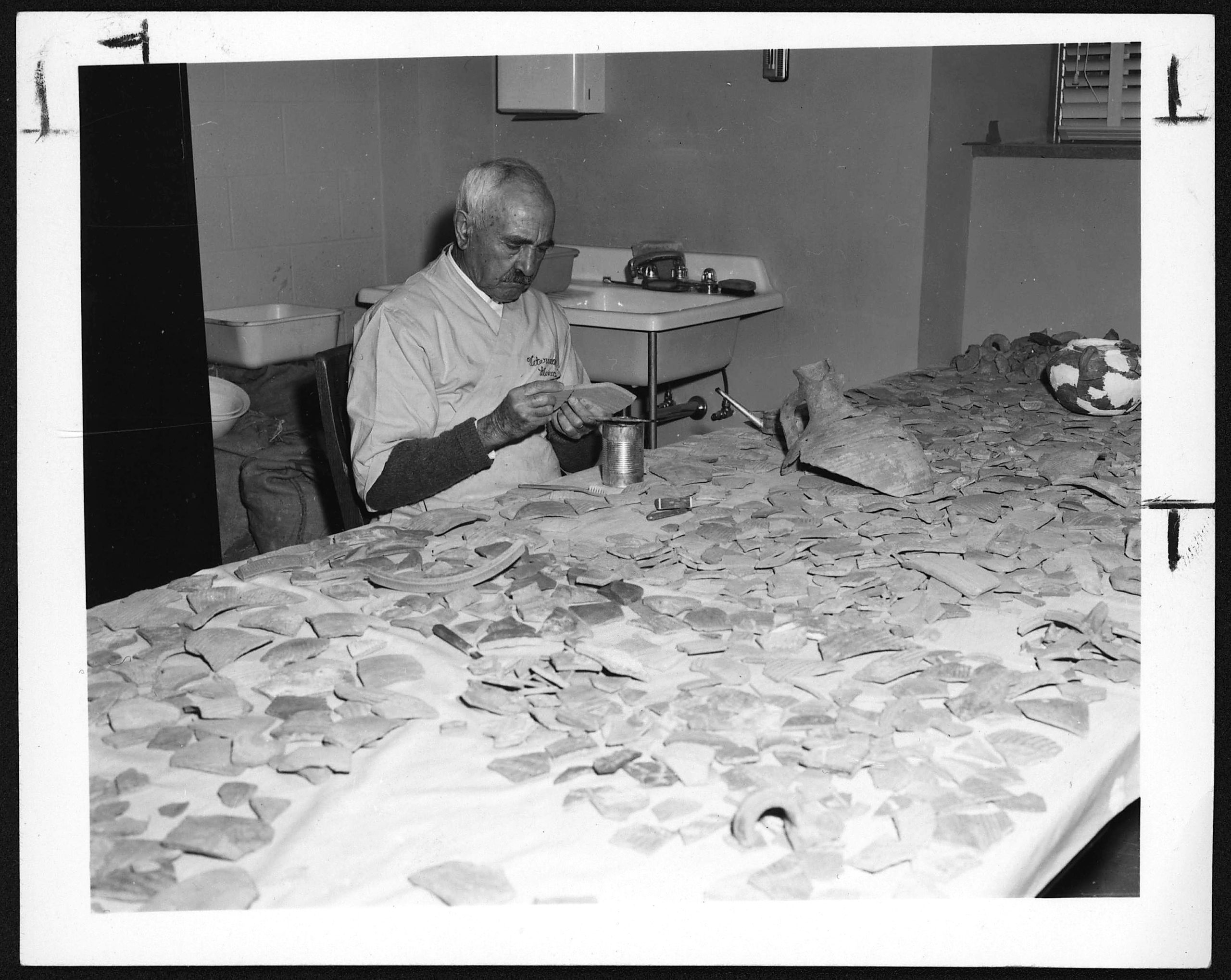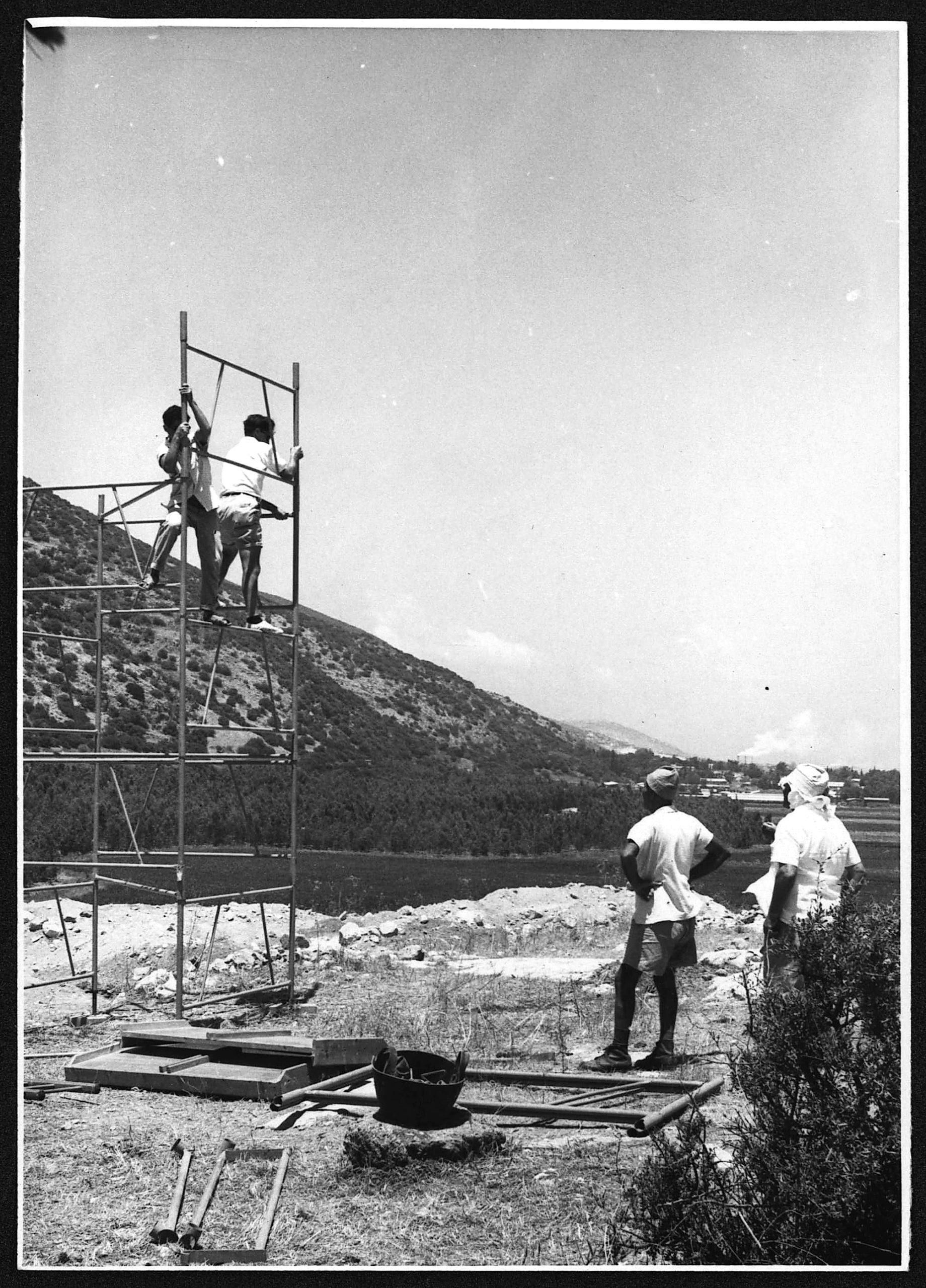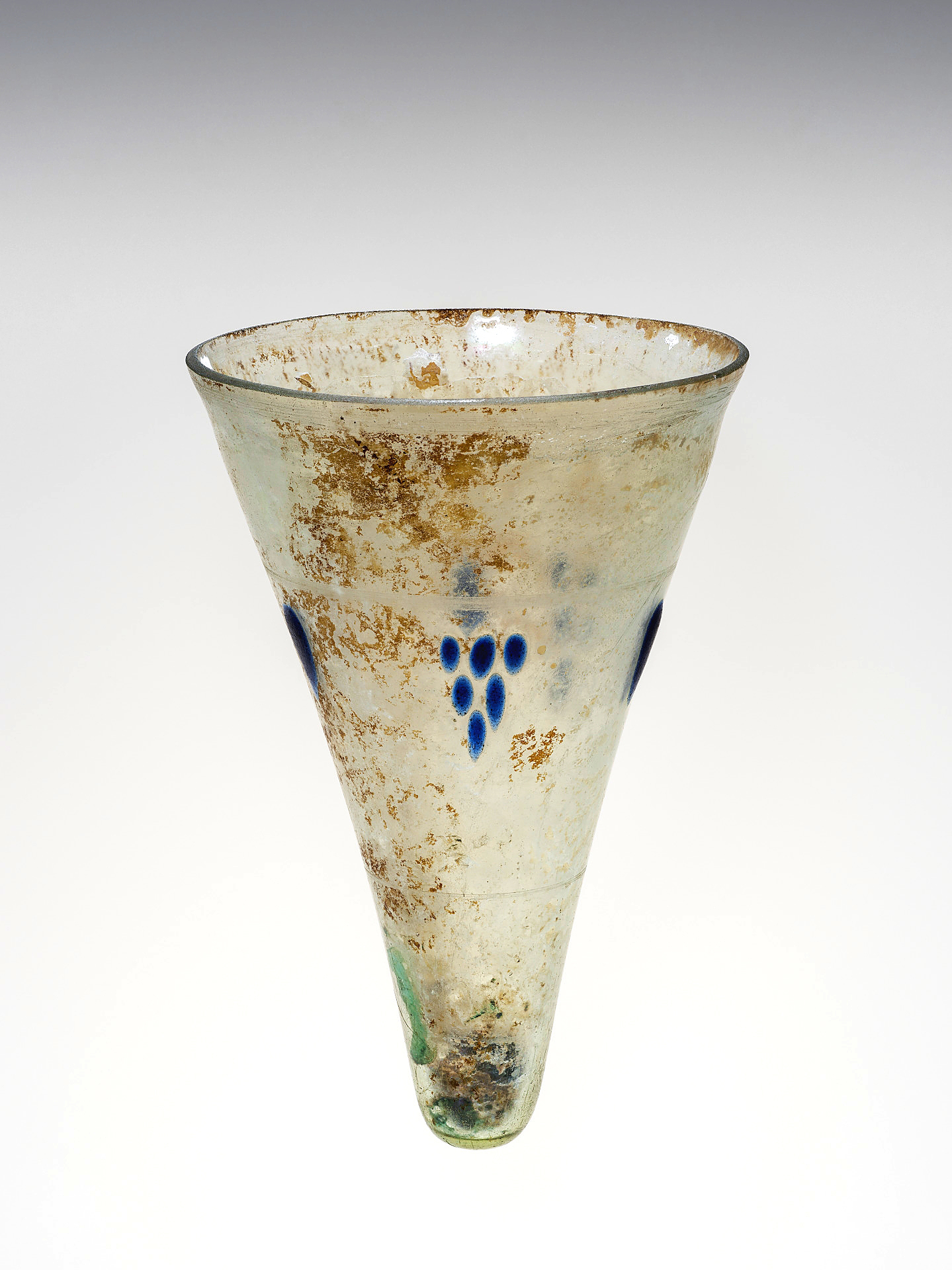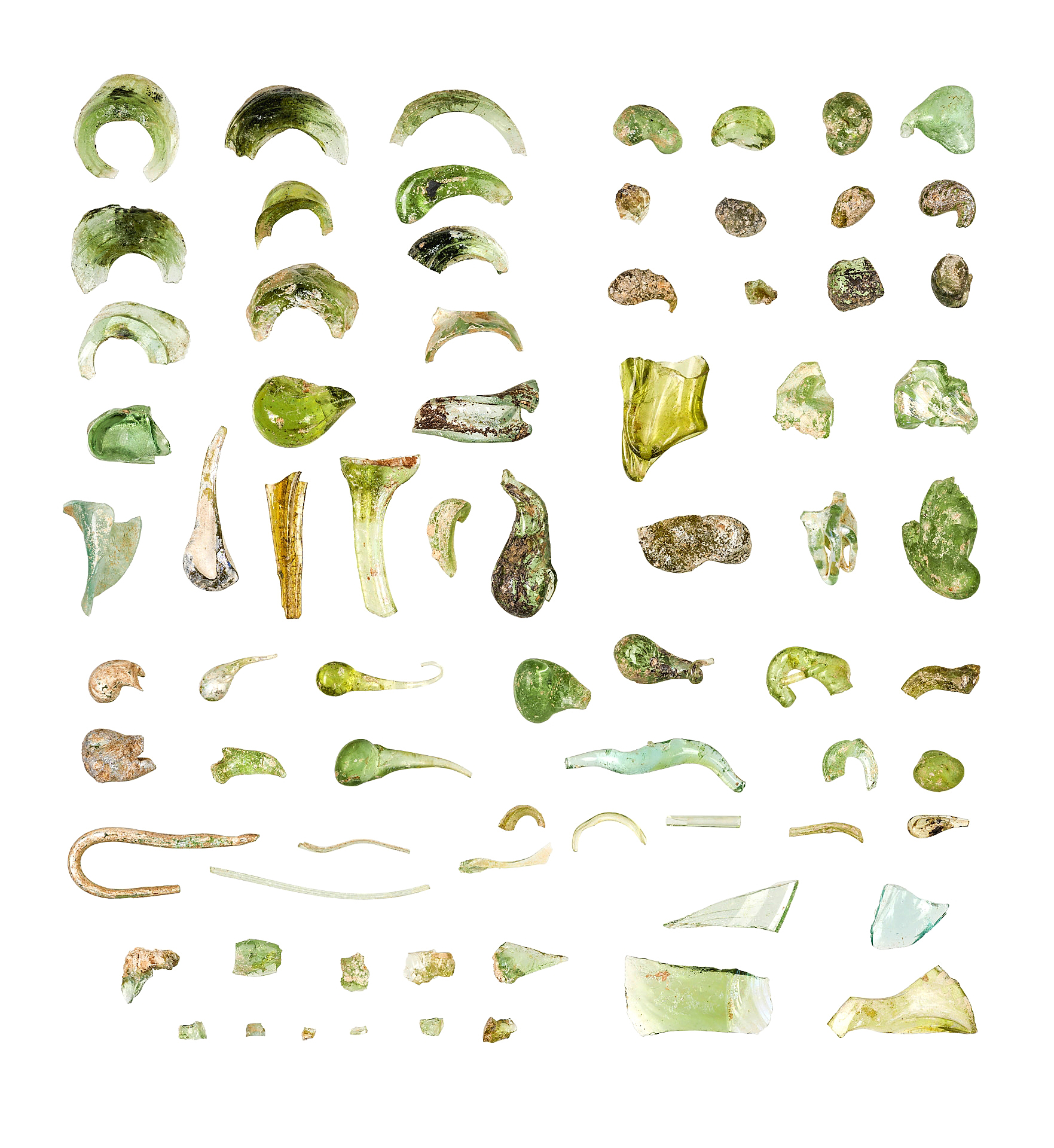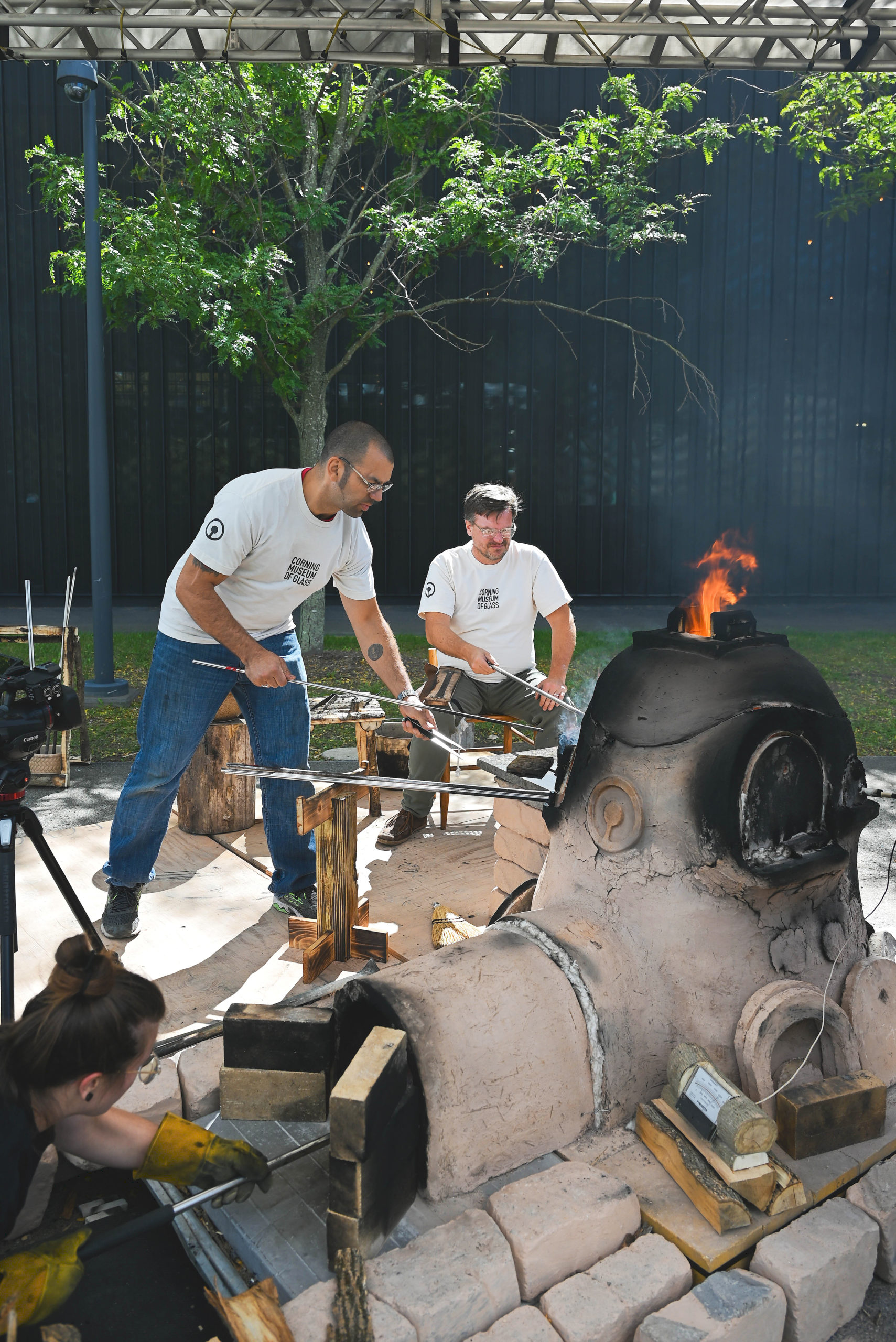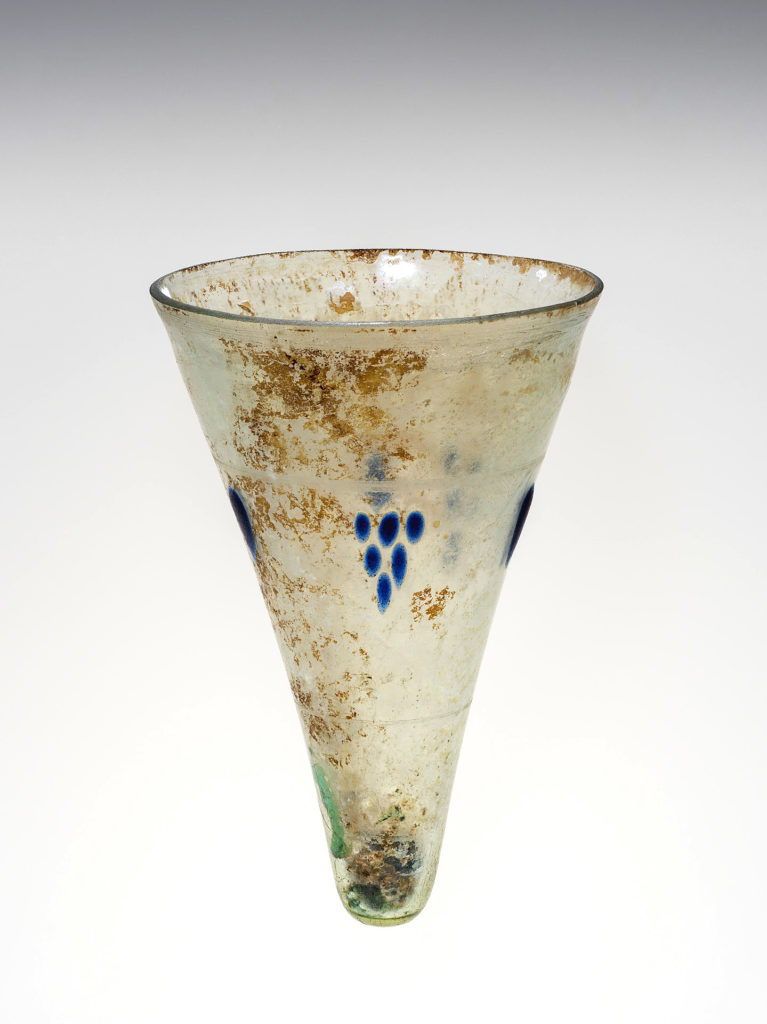
Cone beaker or conical lamp, Eastern Mediterranean, 300-399 CE, blown, wheel cut and applied decoration. Photo courtesy the Corning Museum of Glass, Corning, N.Y.
Modern collectors
By Karla Klein Albertson
CORNING, N.Y. — While the basic needs of humanity started with something to nourish and clothe the body, it was not very long before people began to demand a wide range of other stuff. Some products were quite utilitarian, such as plows and wheels and storage pots. Others — for example, tableware and jewelry — relied on artistic appeal for sales.
People with the right skills became specialists and formed workshops that in some cases grew into mini-factories. If your output was both beautiful and useful, your business was a long-lasting success. One such concern was a Fourth Century CE glass workshop at Jalame in Israel.
Excavated by a team from the Corning Museum of Glass and the University of Missouri almost 60 years ago, the site at Jalame was the first ancient glass workshop to be systematically excavated and thoroughly published.
Dedicated to the history of the medium, the Corning Museum of Glass has organized “Dig Deeper: Discovering an Ancient Glass Workshop.” The project presents important discoveries from excavations at Jalame undertaken by the Corning and the University of Missouri, Columbia, between 1963 and 1971.
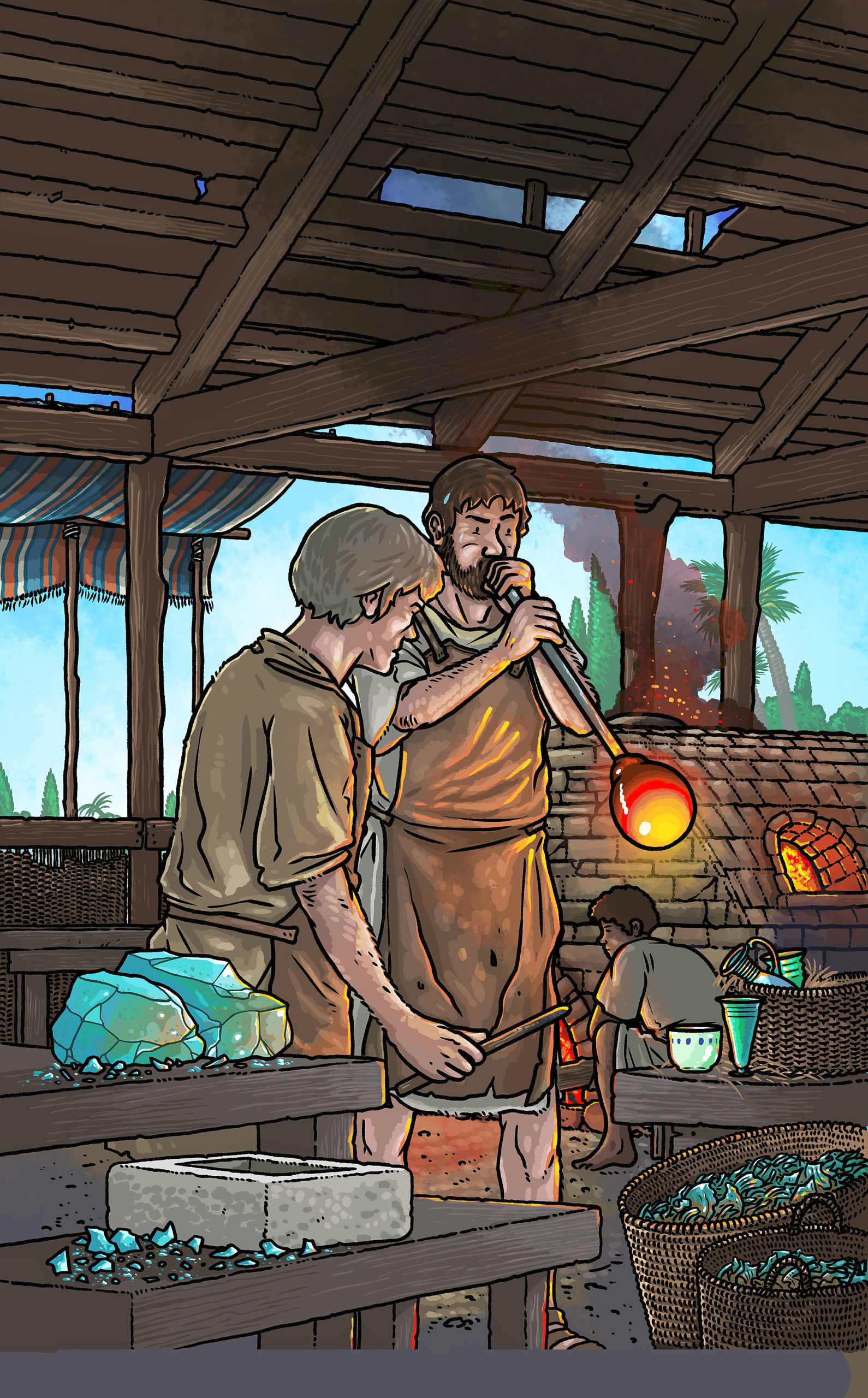
Reconstruction of blowing glass at Jalame, Israel, from the comic book Discovering Ancient Glass: The Workshop at Jalame. Photo illustrated by John G. Swogger.
This particular workshop was exceptional in that it not only made finished blown glass vessels, but also produced raw glass in bulk which could be shipped to far away workshops and processed elsewhere.
As you would expect, finds at any workshop site include broken pieces left behind by production reveal more information. On display in the galleries are around 75 objects on loan from the Israel Antiquities Authority, including more than two dozen well-preserved glass vessels and glass fragments from Jalame and nearby sites. Other exhibits include archival photos of the dig as well as glass and coins from Jalame on loan from the Museum of Art and Archaeology at the University of Missouri.
Part of Corning’s mission is sharing how glass is made, so an additional project “Get Stoked! Fueling Furnaces from Wood to Wind” will open in the innovations Focus Gallery on July 1. Exhibits will include a replica of an ancient wood-fired furnace, which draws attention to the problems of fueling a furnace to reach the necessary temperatures to work glass.
Antiques and The Arts Weekly talked with Katherine A. Larson, curator of ancient glass and the archaeologist who put together both projects: “The demonstrations that will be taking place at the wood-fired furnace in July and August will be wonderful; select demonstrations will also be live-streamed for those unable to come to Corning. It really was a highlight of my career to see the furnace operate and begin to understand more deeply how glass could have been made before the modern era. It all makes the past feel much closer — and yet more distant as you come to realize how different the environment was, even if the mechanics are similar.”
“When I started working at the Corning in 2016, I came across the materials that had been recovered at the site, which for me as an archaeologist was really exciting,” said the curator. “I had read about Jalame — it’s something that all glass students learn about.”
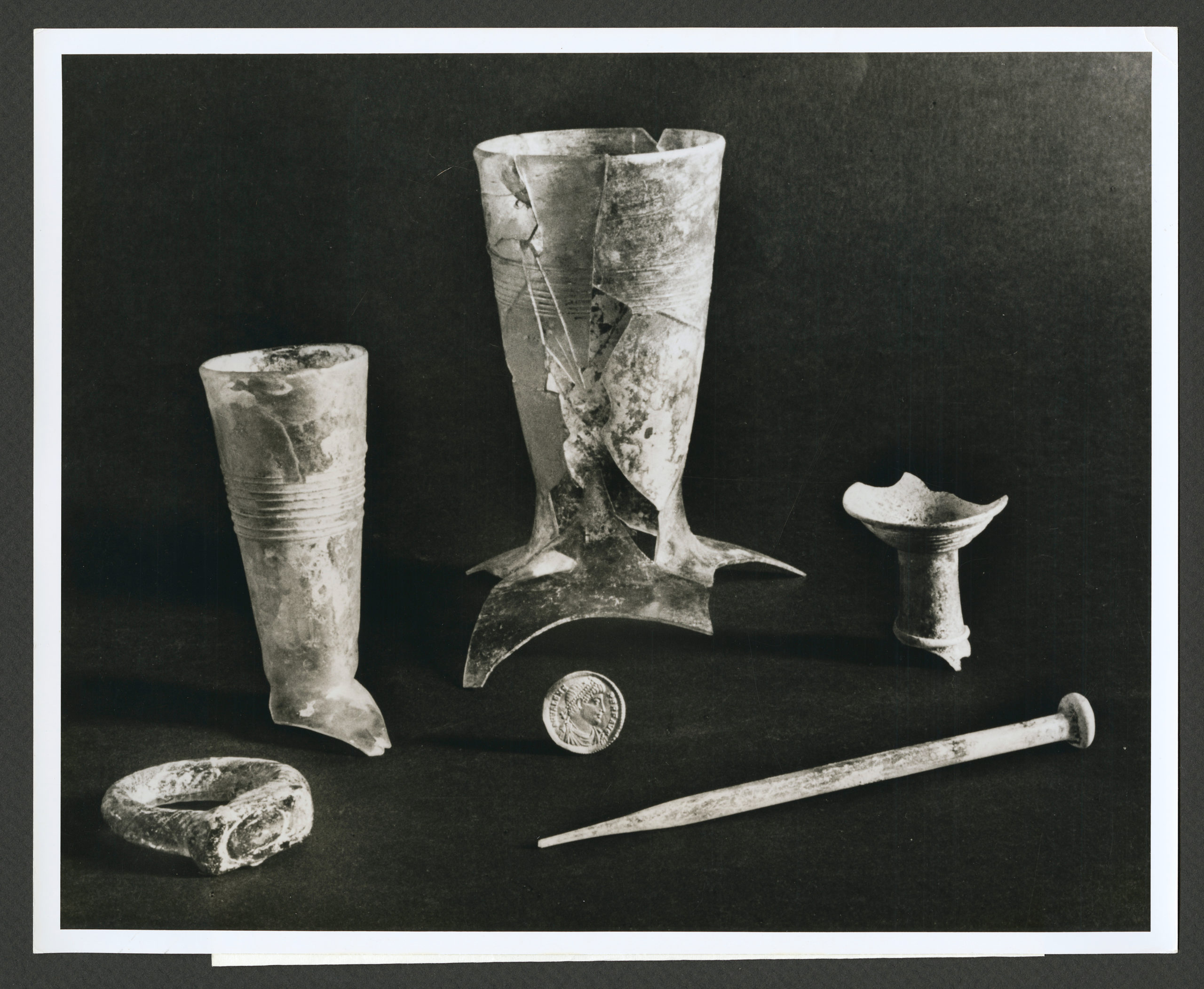
Three bottle fragments, gold coin, ring and pin, excavated at Jalamet el Asafna, the site of an ancient glass factory near the city of Haifa, Israel. Photo courtesy Rakow Research Library, the Corning Museum of Glass, Corning, N.Y.
“It was such an important site for understanding how glass was made in the ancient world, which continues to be something we think about and work on and discuss today. It seemed like a wonderful opportunity to bring those threads together and celebrate Corning’s legacy with this material and the site. And bring the information up to the present day.”
“As it evolved and I spent more time in the museum and in the galleries and talking to visitors, I learn about their questions when encountering ancient material. People don’t realize that uses for glass in the Roman period were quite similar to the way we use glass today — drinking cups, bottles and containers.”
“And people had a lot of questions about how that glass was made. So, we’ve organized the gallery display — quite deliberately — around these questions. What did the furnaces look like? How do we know what glass was made of? How was it used? And more broadly, how do we think about the ancient world as Twenty-First Century people?”
Modern collectors become specialists in blown glass, mold-blown and/or press molded pieces. All the tableware production at Jalame was free-blown, but glass was popular and progress came quickly.
Larson explained, “Glass blowing seems to start in the First Century BCE and takes off over the First Century CE and mold-blowing starts at the same time. At Jalame, they were really making utilitarian everyday stuff for local and regional consumption. What they were making in that line probably didn’t travel very far.”
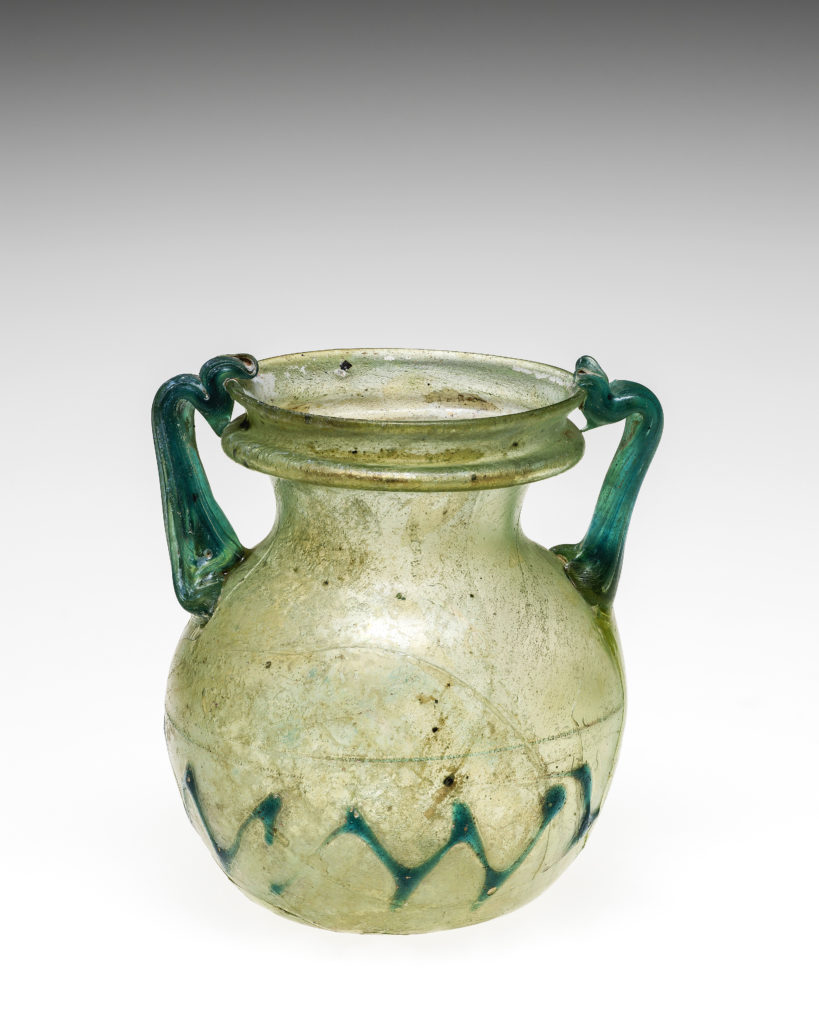
Jar, Roman Empire; possibly Syria or Palestine, 300-425 CE, blown glass, applied and trailed decoration. Photo courtesy the Corning Museum of Glass, Corning, N.Y.
But they were also producing those desirable chunks of raw glass. She continued, “They were in this heartland where glass was made from sand and natron. That glass probably went at least throughout the eastern Mediterranean, sent out on ships.”
Above all, the curator hopes that the show will be an enjoyable learning experience for all ages: “We wanted to make sure that the exhibition is family friendly. It’s really set up for adults to come with their children. There are a lot of hands-on elements. We hope people get a sense of curiosity about the ancient world. Plus, an appreciation for the technical accomplishments and the way archaeologists understand the past.”
Rather than a conventional catalog, the museum is publishing a 36-page booklet with drawings in the style of a comic book about the glass workshop at Jalame. The text is by exhibition curator Katherine Larson and the imagery by archaeological comic illustrator John Swogger.
A highlight of the special events will be the 61st Annual Seminar on Glass, October 19-20 this fall, which will serve as a retrospective on the site and its discoveries, highlighting what we have learned about ancient glass production in Roman Palestine since. Presenters will share recent discoveries of ancient glass workshops, new ways of understanding the relationship between the ancient and contemporary worlds, and the process of immersing museum visitors in an exhibition about archaeological discovery.
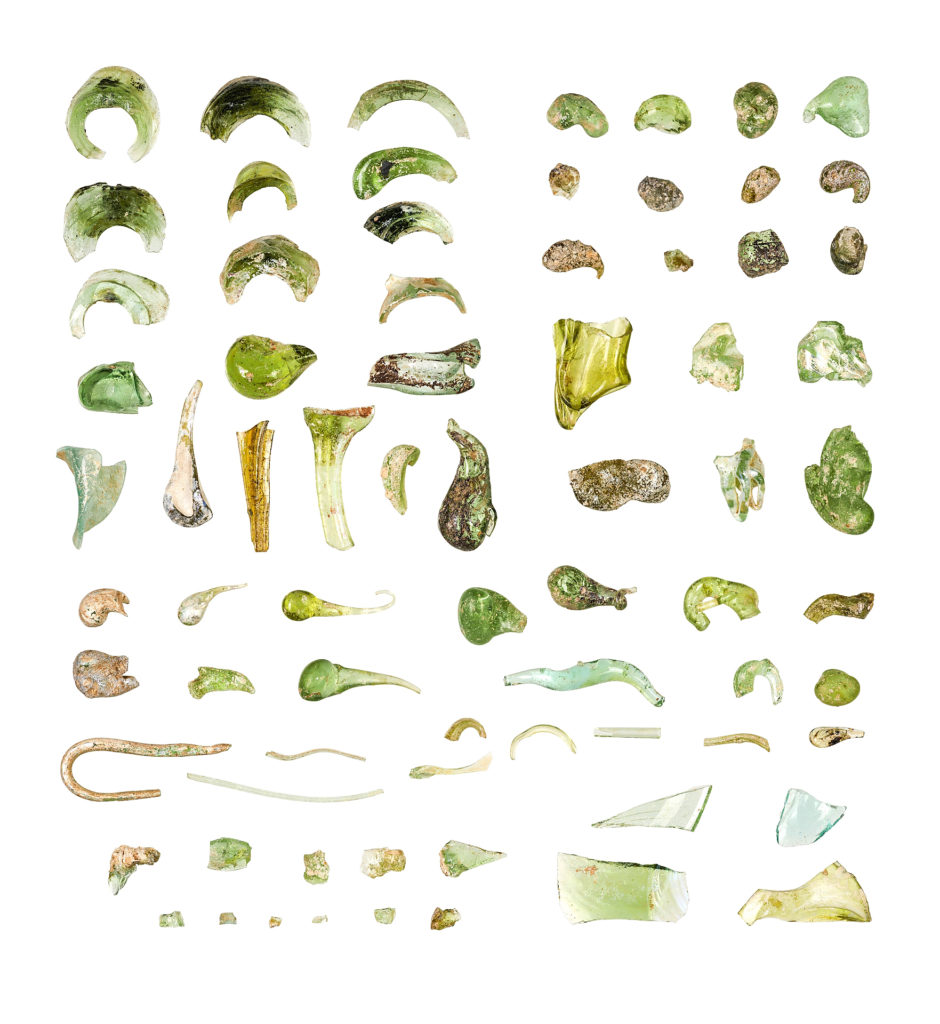
Blowing debris and production waste, Jalame, Israel, 350-400 CE. Lent by the Israel Antiquities Authority. Photo courtesy the Corning Museum of Glass, Corning, N.Y.
The two-day program will include an international roster of keynote speakers, papers and moderated panels. In between sessions, registrants will enjoy virtual tours, glassblowing demonstrations and opportunities to network with colleagues in Community Rooms.
“Dig Deeper: Discovering an Ancient Glass Workshop” will be on view at the Corning Museum of Glass May 13-January 7.
The Corning Museum of Glass is at 1 Museum Way. For information, 800-732-6845 or 607-937-5371 or www.cmog.org.
To register for the online sessions that will complement the “Dig Deeper” exhibition, https://whatson.cmog.org/events-programs/lectures-seminars/annual-seminar-glass

